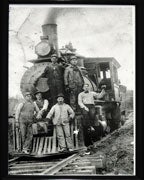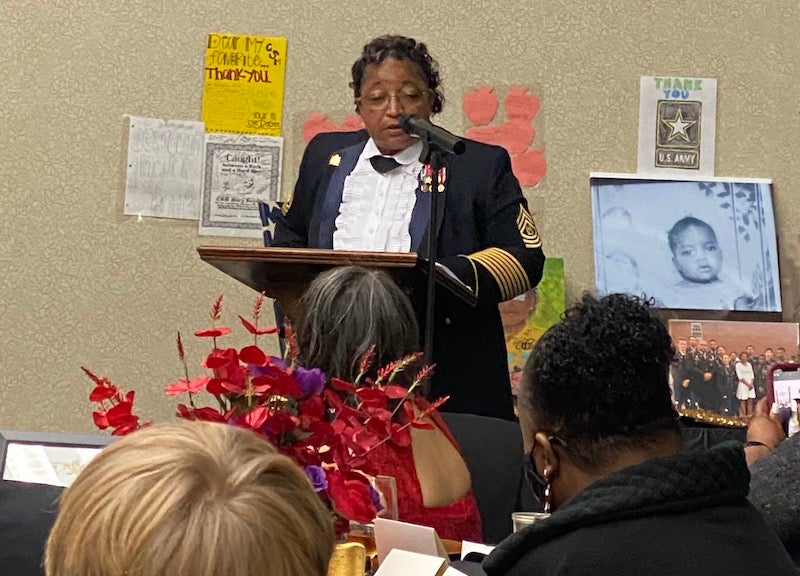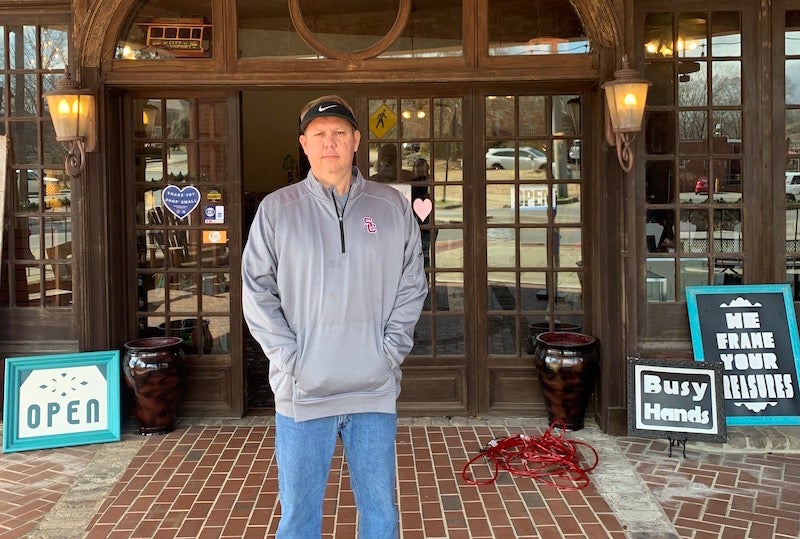Donated photo takes viewers back in time
Published 3:22 pm Monday, March 17, 2014
By LAURA BROOKHART/Community columnist
The Kenneth R. Penhale Historic Museum recently received a significant new photograph donated by Mrs. Minnie Draper McDonough, who has given other valuable and historic photographs that give a glimpse of life in a mining camp. McDonough, now 92, spent her first seven years growing up in the mine town at Roebuck where her father, Fred Draper, worked.

Minnie Draper McDonough recently donated this photo of a steam switch engine to the Kenneth R. Penhale Historic Museum in Helena. (contributed)
She was friends with Margaret Nash Montgomery (known as Baby Nash) and Eleanor Postell Paty. The most recent photo shows a steam switch engine most likely used to carry the loads of coal at #2, #3 and #4 Eureka mines.
Her father is pictured on the far left with other unidentified miners and one office worker (in bow tie) in this view captured circa 1919-20.
Nearby hangs a photo of other turn-of-the-century miners who worked long hours for low pay. C.I.Hinds, Ken Penhale’s grandfather, who was later a fireboss at the Mossboro Mine and a foreman at Eureka Mine #4 is shown. Hinds became Helena’s first mayor after the city’s reincorporation in 1917.
Another new display at the museum is a corncrib from the Old Powell Hotel on Second Street that originally belonged to Eula Hinds and given by her great-great-grandson, Brian Hinds, after restoration by Harold Reed.
Mounted on it is a Clarksville Corn Sheller restored by Rock McCully. The sheller would have been used to shell peas or corn for animals or then run through the grinder (displayed nearby) to make corn mill.
Penhale is now adding nearby a new display of pea scales and other related tools.
The museum welcomed many first time visitors on Helena’s March 7, First Friday. All were impressed with the exhibits that now occupy both the first and second floor.
Two large maps, copies of originals that may be seen in the state archives in Montgomery, can be viewed upstairs.
The maps annotate: (1) General F. L. Claiborne’s Map of the Fort Mims Massacre. The fort fell August 30, 1813 and the dead were buried September 9, 1813. (2) The Battle of Horseshoe Bend on 27th March, 1814, General Jackson’s Campaign Against the Creek Indians 1813 & 1814.
“Our first Helena settlers, Jones Griffin and members of the Lee family,” Penhale said, “came with General Jackson to fight the Indians.”








